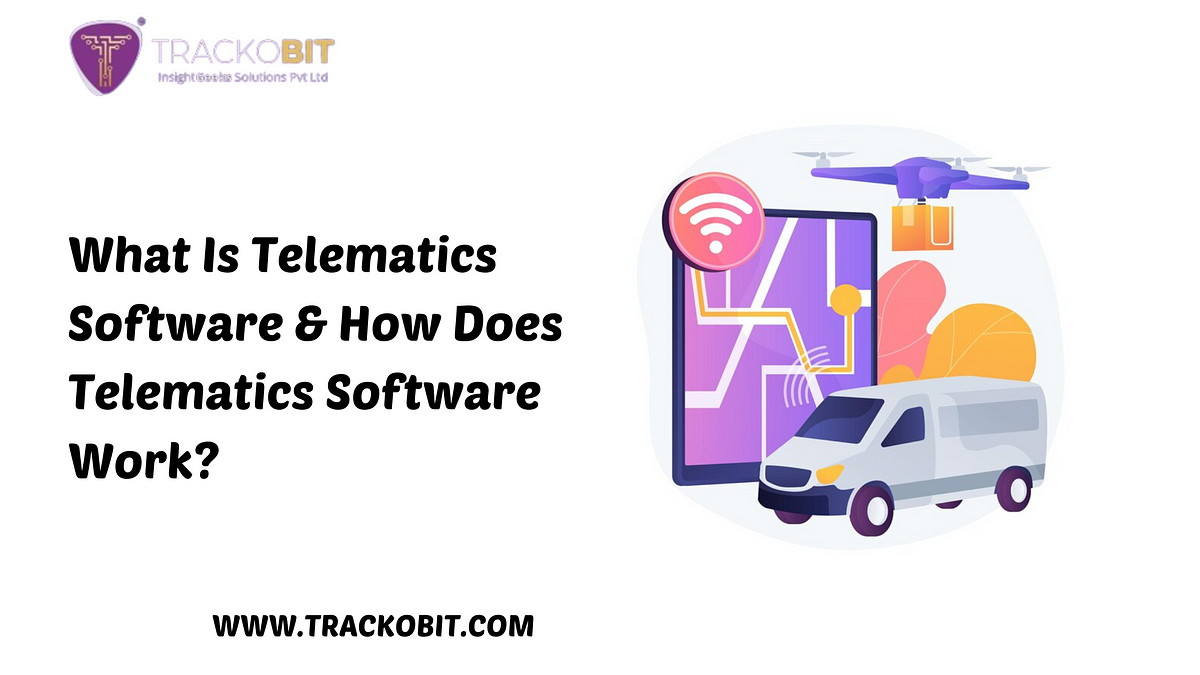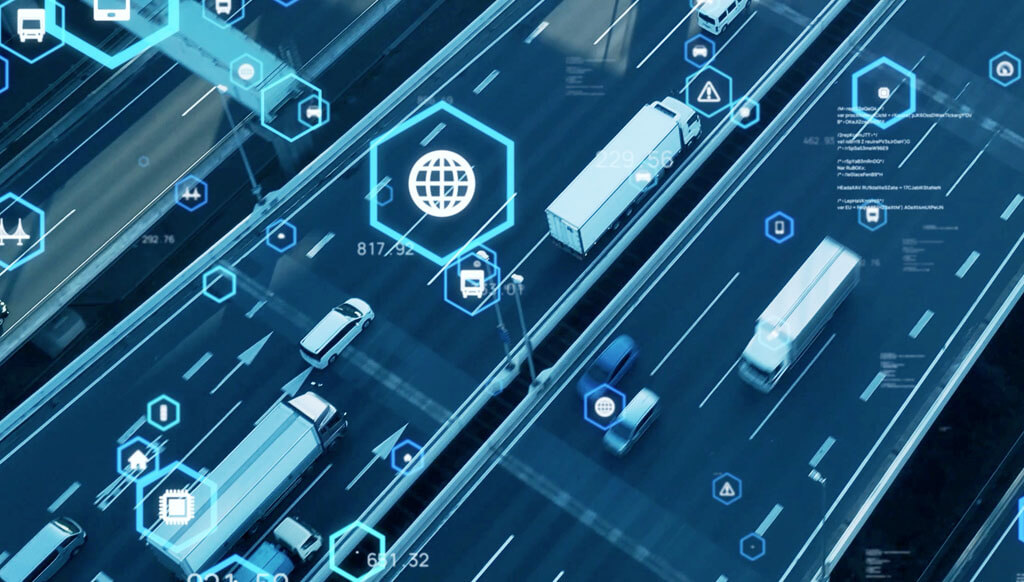Starting with construction equipment telematics, this innovative approach is transforming the way the construction industry manages machinery and data. Telematics combines telecommunications and monitoring systems to provide real-time insights on equipment performance, utilization, and location. By leveraging cutting-edge technology, construction companies can optimize operations, improve safety, and reduce costs while maintaining a competitive edge in the market.
The integration of GPS, sensors, and data analytics enables contractors to track and manage their equipment efficiently. With these systems in place, construction professionals can make informed decisions that lead to enhanced productivity and streamlined workflows. As telematics continues to evolve, its impact on the industry is expected to grow, offering even more robust solutions for modern construction challenges.
Overview of Construction Equipment Telematics
Telematics is a transformative technology that integrates telecommunications and monitoring systems to enhance the efficiency and productivity of construction equipment. It allows contractors and fleet managers to make informed decisions based on real-time data, thereby optimizing operations and reducing costs. Understanding the fundamentals of telematics is essential for anyone involved in the construction industry.Telematics technology in construction machinery involves the use of sensors, GPS, and wireless communication to collect and transmit data from equipment to a centralized system.
This data can include information about equipment location, operational status, fuel consumption, and maintenance needs. The systems utilize cloud computing and data analytics to provide actionable insights that can help streamline operations and improve decision-making. The technology operates by embedding hardware into machinery, which gathers data and sends it to software platforms for analysis and reporting.
Benefits of Implementing Telematics Systems
The integration of telematics systems into construction operations yields numerous advantages that can directly impact productivity and cost-effectiveness. Some of the key benefits include:
- Enhanced Equipment Utilization: Telematics systems enable fleet managers to monitor equipment usage and identify underutilized machinery, leading to more efficient allocation of resources.
- Improved Maintenance Scheduling: By providing real-time diagnostics and alerts for maintenance needs, telematics can help prevent breakdowns and reduce downtime, ultimately extending the lifespan of equipment.
- Fuel Efficiency: Data on fuel consumption allows operators to adopt better practices that can lead to significant savings in fuel costs.
- Increased Security: GPS tracking enhances the security of construction equipment, helping to deter theft and enabling quick recovery of stolen machinery.
- Data-Driven Decision Making: Access to comprehensive data analytics empowers managers to make informed decisions that can improve project timelines and profitability.
“Telematics transforms the way construction businesses operate, providing insights that lead to smarter decisions and greater efficiencies.”
The implementation of telematics systems is crucial in today’s competitive construction landscape, allowing firms to leverage technology for better operational outcomes. By harnessing the power of data, companies can not only enhance performance but also drive innovations that set them apart in the industry.
Key Components of Telematics Systems

Telematics systems in construction play a crucial role in enhancing operational efficiency and equipment management. Understanding the key components of these systems can provide significant insights into how they function and contribute to the overall productivity of construction projects. The integration of various technologies allows for real-time tracking, data collection, and analysis, which are vital for informed decision-making.
Essential Components of Telematics Systems
Telematics systems comprise several essential components that collectively work to provide valuable data and insights. These components include GPS technology, sensors, and data analytics, each playing a significant role in the system’s effectiveness.
- GPS Technology: Global Positioning System (GPS) is at the heart of telematics, enabling precise tracking of equipment location and movement. This technology allows construction managers to monitor equipment in real-time, thereby enhancing security and optimizing logistics. For instance, if a piece of equipment is reported missing, GPS can help locate it quickly, reducing downtime and loss.
- Sensors: Sensors are critical for gathering data regarding equipment performance and environmental conditions. They can measure various metrics, such as fuel consumption, engine temperature, and operational hours. By collecting this data, construction managers can perform maintenance proactively, reducing the likelihood of equipment failure. For example, sensors can alert operators to low oil levels, prompting immediate action to avoid costly repairs.
- Data Analytics: The data collected from GPS and sensors is processed through data analytics tools. This analysis transforms raw data into actionable insights, helping construction companies make informed decisions. By analyzing trends, such as equipment usage patterns, managers can optimize fleet utilization and reduce operational costs. For instance, if data shows that certain equipment is underused, a company might decide to rent it out, generating additional revenue.
Integration with Other Construction Management Tools
The synergy between telematics and other construction management tools enhances overall workflow efficiency. Integrating telematics with project management software, scheduling tools, and maintenance systems creates a comprehensive approach to construction management.
- Project Management Software: When telematics data is integrated with project management tools, it allows managers to align equipment availability with project timelines. This ensures that the right tools are on-site when needed, preventing project delays.
- Scheduling Tools: Integration with scheduling software enables construction teams to create more accurate timelines by factoring in real-time equipment availability and performance data. This leads to better resource allocation and improved project outcomes.
- Maintenance Management Systems: By linking telematics data with maintenance systems, companies can automate maintenance schedules based on actual usage rather than estimations. This predictive maintenance approach minimizes costly downtime and extends the lifespan of equipment.
The integration of telematics into construction management systems ultimately results in smarter resource allocation, improved productivity, and significant cost savings.
Benefits of Telematics in Construction
Telematics technology offers a suite of advantages that can significantly enhance the operational efficiency of construction equipment. By integrating GPS tracking, data analytics, and real-time monitoring, companies can revolutionize their approach to equipment management. The implementation of telematics leads to improved performance, cost savings, and better compliance with safety regulations.One of the primary benefits of telematics is its ability to track equipment utilization and performance.
This involves not only knowing where equipment is located but also understanding how it is being used. With accurate tracking, construction firms can optimize the deployment of their machinery, ensuring that assets are utilized effectively and not sitting idle. This leads to enhanced productivity and maximized return on investment.
Equipment Tracking and Utilization Monitoring
The ability to monitor the real-time location and operational status of construction equipment plays a vital role in project management. The insights gained from telematics allow for better scheduling and allocation of resources. Key benefits include:
- Reduced downtime: Knowing exactly where equipment is and when it is in use minimizes delays related to equipment unavailability.
- Enhanced maintenance scheduling: Data on equipment usage patterns can inform predictive maintenance, reducing breakdowns and extending the lifespan of machines.
- Efficient inventory management: Telematics helps track the movement and usage of equipment across job sites, allowing companies to manage their fleet more strategically.
Fuel Efficiency and Operational Cost Reduction, Construction equipment telematics
Telematics not only enhances operational efficiency but can also lead to substantial savings in fuel costs. By monitoring fuel consumption and identifying inefficiencies in machine operation, construction firms can take actionable steps to reduce their expenses.Important insights include:
- Fuel consumption data allows companies to identify which machines are underperforming and potentially wasting fuel.
- Telematics can signal when machines are idling excessively, prompting operators to adjust their practices and save fuel.
- Optimizing routes for machinery transportation can lead to lower fuel costs, as detailed tracking data helps identify the most efficient paths.
Safety and Compliance Enhancements
Safety is paramount on construction sites, and telematics contributes significantly to creating a safer work environment. By providing real-time monitoring of equipment and operators, companies can ensure compliance with safety regulations and minimize risks.Highlights of telematics for safety include:
- Geofencing: Operators receive alerts when equipment enters or exits predefined zones, which can prevent unauthorized use and improve site security.
- Driver behavior monitoring: Insights into operators’ driving habits help address unsafe practices and reduce accidents.
- Incident reporting: Telematics systems can generate reports on equipment use and incidents, enabling companies to analyze and improve their safety protocols.
Case Studies of Telematics Implementation
Telematics technology has become a game changer in the construction sector, offering companies the ability to monitor, manage, and optimize equipment usage. Through several case studies, we can see how different organizations have successfully integrated telematics into their operations, leading to significant efficiency gains and cost savings. This section will delve into specific implementations, highlighting their outcomes and the lessons learned.
Case Study: XYZ Construction Group
XYZ Construction Group implemented a telematics system across their fleet of heavy machinery, aiming to enhance operational efficiency and reduce costs. The company initially faced challenges with equipment downtime and inefficiencies in fuel consumption. After deploying telematics, they were able to track equipment usage and maintenance needs in real-time.The results were impressive:
- Reduced equipment downtime by 30%, thanks to predictive maintenance alerts.
- Improved fuel efficiency by 15%, leading to substantial cost savings.
- Increased project completion rates by 20% due to better equipment availability.
The implementation provided valuable insights into operational inefficiencies, allowing the company to make informed decisions on equipment usage and maintenance schedules.
Case Study: ABC Infrastructure Ltd.
ABC Infrastructure Ltd. sought to improve their project delivery timelines and reduce labor costs. By incorporating telematics into their construction vehicles, the company was able to gather data on vehicle performance and operator behavior. This information led to enhanced training programs and better resource allocation.Key outcomes from their telematics deployment included:
- A 25% reduction in labor costs through optimized resource allocation.
- A decrease in project delivery time by 15%, significantly enhancing client satisfaction.
- Real-time tracking of equipment location, leading to better site management.
The lessons learned emphasized the importance of incorporating user training alongside technology implementation to maximize the benefits of telematics.
Case Study: DEF Builders Inc.
DEF Builders Inc. implemented a comprehensive telematics solution to tackle issues related to equipment theft and underutilization. By using GPS tracking and sensor data, they could monitor equipment movements and usage patterns.The implementation yielded the following results:
- Reduced theft incidents by 40% due to improved tracking and security protocols.
- Enhanced utilization rates of equipment by 35%, translating to higher productivity.
- Cost savings of approximately $150,000 annually from recovered stolen assets.
The deployment highlighted the necessity of integrating telematics not just for performance metrics, but also for securing valuable assets in the field.
“Telematics is not just a tool; it’s a strategic asset that transforms how companies manage their construction projects.”
These case studies illustrate the diverse applications and benefits of telematics in the construction industry, showcasing how organizations can leverage technology to achieve operational excellence and boost their bottom line.
Challenges and Limitations of Telematics
As construction companies increasingly adopt telematics systems to enhance efficiency and productivity, they often encounter various challenges and limitations. Understanding these hurdles is crucial for successfully integrating telematics into operations and overcoming potential setbacks.
Common Challenges in Telematics Implementation
Implementing telematics systems is not without its difficulties. Companies may face several common obstacles during the rollout phase. Key challenges include:
- Integration with Existing Systems: Many construction firms operate with diverse software and hardware solutions, making it challenging to integrate new telematics technologies seamlessly.
- High Initial Costs: The upfront investment required for telematics systems can be significant, which may deter smaller companies from adopting the technology.
- Training and Adoption: Employees need proper training to use telematics systems effectively, and resistance to change can slow down adoption rates.
- Data Overload: The vast amount of data generated can overwhelm teams, making it difficult to extract actionable insights without proper data management strategies.
Limitations of Telematics Technology
While telematics offers significant benefits, it also comes with inherent limitations in the construction environment. These limitations can affect the overall effectiveness of the systems:
- Connectivity Issues: Telematics systems often rely on cellular or satellite networks, which can be unreliable in remote job sites, leading to gaps in data collection.
- Hardware Limitations: The durability and lifespan of telematics devices can be compromised in harsh construction environments, leading to maintenance challenges.
- Inconsistent Data Accuracy: Issues such as sensor malfunctions or GPS inaccuracies can result in unreliable data, which undermines the decision-making process.
Data Privacy Concerns
As telematics systems collect and transmit vast amounts of data, concerns regarding data privacy and security arise. Protecting sensitive information is critical for construction firms:
- Employee Monitoring: The ability to monitor employee locations and activities raises ethical concerns about privacy and surveillance, potentially affecting employee morale.
- Data Breaches: Telecommunication systems can be vulnerable to cyberattacks, putting confidential business data and personal information at risk.
- Compliance with Regulations: Companies must navigate complex data protection regulations, such as GDPR or local data privacy laws, to avoid legal repercussions.
Future Trends in Construction Telematics
The construction industry is on the brink of a technological evolution, particularly with the advancement of telematics systems. As these technologies continue to develop, they are set to revolutionize how construction equipment is monitored, maintained, and utilized. The future of telematics in construction is not only about improving efficiency but also about enhancing safety and sustainability on job sites.Emerging trends in telematics technology reveal a growing integration of artificial intelligence (AI), big data analytics, and the Internet of Things (IoT).
These innovations are expected to profoundly influence construction operations by providing real-time insights, predictive maintenance capabilities, and enhanced connectivity among various machinery and stakeholders.
Integration of AI and Big Data
The incorporation of AI and big data into telematics systems will enable construction companies to better analyze equipment performance and operational data. This integration will lead to smarter decision-making processes and improved project outcomes. For instance, predictive analytics can forecast potential equipment failures or maintenance needs, thereby reducing downtime and repair costs. Specific applications could include:
- Real-time analytics dashboards that provide instant feedback on equipment usage and performance metrics.
- Machine learning algorithms that predict equipment failure based on historical usage patterns and real-time sensor data.
- Automated resource allocation based on data-driven insights, optimizing labor and material costs.
Enhanced Connectivity Through IoT
The Internet of Things is poised to play a significant role in telematics, creating a network of connected devices that communicate seamlessly. This enhanced connectivity will allow for more sophisticated monitoring and control of construction equipment from remote locations. Potential developments include:
- Wearable devices for workers that monitor health and safety metrics, sending alerts if unsafe conditions are detected.
- Smart sensors on machinery that provide alerts for maintenance needs, helping to prevent costly failures.
- Mobile applications that allow project managers to track equipment location and status in real-time, facilitating better logistics and resource management.
Focus on Sustainability
With increasing awareness of environmental impact, telematics will also evolve to support sustainable practices in construction. The technology can help monitor fuel consumption, reduce emissions, and promote the use of eco-friendly materials. Examples of sustainable applications include:
- Telematics systems that track and report energy usage of construction sites, allowing for more efficient energy management.
- Integration with renewable energy sources, enabling equipment to operate on solar or wind energy, thereby reducing carbon footprints.
- Data analytics tools that help optimize material usage, minimize waste, and promote recycling efforts on construction sites.
Remote Operation and Automation of Equipment
The trend towards automation in construction is set to accelerate, with telematics facilitating remote operation of equipment. This shift will not only enhance safety by reducing the need for operators to be physically present in hazardous environments but also improve efficiency and productivity.Key advancements include:
- Remote-controlled construction machinery that can be operated from a safe distance, minimizing risk for operators.
- Autonomous vehicles capable of performing routine tasks, such as site surveying or material transport, without human intervention.
- Integration of drones for aerial site inspections and monitoring, providing comprehensive data collection without the need for manual checks.
The evolution of telematics in the construction sector will redefine operational standards, making projects more efficient, safer, and environmentally friendly.
Telematics Data Management

The management of data generated by telematics systems is crucial for maximizing the effectiveness of construction equipment. Proper data management not only ensures that insights are accessible and actionable but also enhances overall operational efficiency. In this section, we will delve into various methods of collecting and managing telematics data, frameworks for analysis, and best practices for maintaining data integrity and security.
Methods for Collecting and Managing Telematics Data
Telematics data is collected through a variety of methods, which include on-board sensors, GPS systems, and machine control technologies. The following approaches are commonly utilized:
- On-Board Sensors: These devices monitor equipment performance metrics, such as engine hours, fuel consumption, and maintenance needs, providing real-time data on equipment status.
- GPS Tracking: Global Positioning Systems track the location and movement of construction equipment, allowing for precise route optimization and asset management.
- Data Integration Platforms: Centralized platforms aggregate data from various sources, ensuring a seamless flow of information across different systems for comprehensive analysis.
- Cloud Computing: Utilizing cloud solutions for data storage and processing facilitates easy access to telematics data from multiple devices and locations, promoting collaboration among teams.
Collecting data using these methods enables construction companies to develop a comprehensive view of their equipment’s performance and utilization.
Framework for Analyzing Telematics Data
Establishing an effective framework for analyzing telematics data can significantly enhance decision-making in construction operations. A systematic approach includes:
- Data Collection: Gather raw data from telematics systems consistently to ensure reliable analysis.
- Data Cleaning: Regularly validate and cleanse data to eliminate errors and ensure accuracy before analysis.
- Data Visualization: Utilize dashboards to represent data graphically, making trends and insights easily interpretable for stakeholders.
- Predictive Analytics: Implement models that use historical data to forecast future equipment performance, aiding in proactive decision-making.
- Reporting Mechanisms: Develop customized reports that highlight key metrics and KPIs relevant to equipment usage, maintenance, and operational efficiency.
By following this framework, construction companies can elevate their operational strategies based on data-driven insights.
Best Practices for Ensuring Data Integrity and Security
Maintaining data integrity and security in telematics systems is imperative to guard against potential breaches and ensure accurate data reporting. Here are several best practices:
- Regular Security Audits: Conduct frequent audits of telematics systems to identify vulnerabilities and address them promptly.
- Access Controls: Implement strict access control protocols to limit data access to authorized personnel only, minimizing risks of unauthorized alterations.
- Data Encryption: Utilize encryption methods for data transmission and storage to safeguard sensitive information from external threats.
- Backup Systems: Maintain robust backup solutions to ensure data recovery in the event of system failures or cyberattacks.
- Employee Training: Regularly train employees on data handling best practices and the importance of data security to foster a culture of awareness.
Implementing these best practices not only protects valuable data but also ensures that the insights derived from the data are reliable and actionable.
Comparing Telemetry Solutions

In the rapidly evolving landscape of construction equipment telematics, selecting the right solution is crucial for maximizing efficiency and reducing costs. Various providers offer a range of features tailored to meet the diverse needs of construction companies. This section reviews different telematics solutions available in the market, outlining their key features, pricing models, and the overall value they bring to construction operations.When analyzing telematics solutions, it is important to consider various factors such as the specific features each provider offers, their compatibility with existing equipment, customer support, and of course, pricing models.
Here are some leading telematics providers and their offerings.
Leading Telematics Solutions Overview
Below is a comparison table highlighting some of the most popular telematics solutions available for construction equipment, including their main features, pricing models, and pros and cons.
| Provider | Key Features | Pricing Model | Pros | Cons |
|---|---|---|---|---|
| Cat Connect | Machine monitoring, fuel tracking, location tracking | Subscription-based, varies by equipment | Strong integration with Cat equipment, reliable support | Higher cost for non-Cat equipment |
| Teletrac Navman | Real-time tracking, maintenance alerts, driver behavior analysis | Monthly fee based on features | User-friendly interface, scalable solutions | Limited features for specific equipment types |
| Vermeer Telematics | Equipment usage statistics, location tracking, alerts | Annual subscription, equipment-based pricing | Excellent for Vermeer equipment users, customizable alerts | Less effective for mixed fleets |
| John Deere WorkSight | Machine health reports, remote diagnostics, usage tracking | Tiered subscription model | Comprehensive insights, strong brand support | Focus on John Deere machines, could be pricey |
| Komatsu Komtrax | Fuel consumption tracking, maintenance scheduling, GPS tracking | Included with equipment purchase | No additional cost, useful alerts | Limited functionality outside Komatsu machinery |
Understanding the strengths and weaknesses of each telematics provider can help construction companies choose the best solution to suit their needs, ultimately leading to improved project efficiency and cost savings.
Training and Implementation Strategies
Successfully adopting telematics systems in the construction industry requires not only cutting-edge technology but also well-designed training programs and strategic implementation plans. A comprehensive approach ensures that construction staff can effectively utilize these systems, resulting in improved operational efficiency and productivity. Proper training and thoughtful integration into workflows minimize disruptions and enhance the overall transition process.
Designing a Training Program
A well-structured training program is crucial for ensuring that construction staff can leverage telematics systems efficiently. The program should encompass various key elements, including theoretical knowledge, practical skills, and ongoing support. Below are the essential components to consider when designing the training program:
- Understanding Telematics Fundamentals: Employees should receive introductory training on the principles of telematics, covering topics such as data collection, transmission, and analysis.
- Hands-On Equipment Training: Providing practical training sessions on how to operate the telematics devices installed on construction equipment helps staff become familiar with the technology.
- Data Interpretation Skills: Training should include how to interpret telematics data to make informed decisions, emphasizing the importance of data-driven insights in enhancing efficiency.
- Integration with Existing Systems: Employees need to understand how telematics integrates with existing workflows and software, ensuring a seamless transition without disrupting operations.
- Continuous Learning Opportunities: Implementing a system for ongoing education keeps staff updated on new features, industry best practices, and changes in technology.
Successful Implementation and Integration Strategies
Integrating telematics into existing construction workflows requires careful planning and coordination. A strategic approach can ease the transition and maximize the benefits of telematics. Key strategies for successful implementation include:
- Stakeholder Engagement: Involve all relevant stakeholders early in the process, including management, site supervisors, and equipment operators, to gain valuable insights and foster acceptance.
- Incremental Rollout: Consider a phased implementation approach, starting with a pilot project to test the system’s effectiveness and address any issues before a full rollout.
- Adaptation of Workflows: Evaluate current workflows and adapt them to accommodate telematics data, ensuring that processes are aligned with the capabilities of the new system.
- Feedback Mechanisms: Establish channels for staff to provide feedback during the implementation phase, allowing for adjustments and improvements based on real-world usage.
- Regular Assessments: Conduct periodic reviews of the telematics system’s performance and its impact on operations, making necessary modifications to improve efficiency.
Checklist for Readiness Assessment
Before adopting telematics systems, companies can use the following checklist to assess their readiness. This ensures that all necessary elements are in place for a successful implementation:
- Leadership Support: Is there strong support from management for the telematics initiative?
- Infrastructure Preparedness: Are the necessary technological infrastructures, such as internet connectivity and compatible devices, available?
- Employee Buy-In: Do employees understand the benefits of telematics and support its implementation?
- Training Resources: Are there sufficient resources allocated for training staff on new technologies?
- Data Management Policies: Are there established protocols for data handling, security, and privacy?
By focusing on these training and implementation strategies, construction companies can effectively incorporate telematics into their operations, leading to enhanced productivity and better resource management.
FAQs
What is construction equipment telematics?
Construction equipment telematics refers to the integration of telecommunications and monitoring technology to track and manage construction machinery in real-time.
How does telematics improve safety on construction sites?
Telematics enhances safety by providing real-time data on equipment conditions and location, allowing for timely interventions and reducing the risk of accidents.
What types of data can be collected through telematics?
Telematics can collect data on equipment performance, usage patterns, fuel consumption, and maintenance needs, among other metrics.
Are telematics systems expensive to implement?
While initial setup costs can vary, the long-term savings and efficiency improvements often outweigh the upfront investment in telematics systems.
Can telematics be integrated with existing construction management software?
Yes, many telematics systems are designed to integrate seamlessly with existing construction management tools, enhancing overall project management capabilities.















